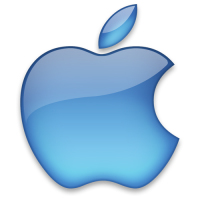Spam, unsolicited e-mail, junk e-mail — whatever you want to call it, has become the scourge of the Internet and a frequent complaint of Internet users. Not only is it time-consuming and annoying, it is an expensive and even potentially dangerous problem for individuals and businesses.

How is spam a problem?
Spam is a leading cause of slow connections and clogged networks. America Online, for example, has reported being barraged with over 8 million spam messages in a single year. Of course, this spam onslaught ties up bandwidth and can cause entire networks to grind to a halt. Although the individual user may not notice it, he can be assured that a portion of his or her monthly bill is devoted to compensating for that lost bandwidth.
Although most spam is merely annoying, much of it contains graphics and images, and of concern to parents is the fact that some of it contains sexually explicit content or links to pornographic websites. Those who use their Macs to in any way to be productive will also find spam to be a great nuisance.
Although of not quite as much concern to Mac users, spam can also be a leading conduit for the transmission of computer viruses, or malicious programs that can infect computer systems, delete files and even steal personal information. Such viruses are hidden in e-mail messages in pictures or attached files. Such viruses can delete important documents and even render an entire system inoperable. Fortunately, these are rare on the Mac.
How can you stop spam?
One way to stop unsolicited e-mail is through the use of a spam blocker. Such software is offered by a number of companies and can range from free to $50 or more.
Anti-spam software uses various techniques to block spam. One way is by blocking certain key words. The software examines the text of messages for certain predefined words and phrases that mark it as having a high probability of being spam.
Although this may seem to be a straightforward task, spammers currently use variations or different spellings of a word to keep it from being recognized. For example, sex may be spelled as s*e*x or s’e’x. Because of the heavy-handed method by which this type of software works, it has a tendency to block personal e-mails. Some spam blocking software views such common words is “free,” for example, as being indicative of spam, something that is the bane of legitimate marketers.
The second spam-fighting technique is the address-blocker method, which flags any e-mails coming from certain domains, or simply those not coming from a narrow list of predefined addresses, such as those in the user’s address book.
Although this kind of software will certainly block spam, it also has the unfortunate consequence of blocking many messages from those not on the predefined e-mail list, making it easy to miss unexpected but potentially important messages.
The third technique is to use a combination of the other two methods, filtering e-mails from known accounts while holding potential spam so that the user can sort suspect e-mails by hand.
Apple’s Mail software allows users to “bounce” unwanted messages back to the sender, although this is not generally the best method of fighting spam, as it requires the unwanted message to have been sent from a legitimate address in the first place. A better feature is Mail’s ability to highlight suspect messages and/or move them to a Junk folder. Mail becomes more accurate over time if you mark messages as “Junk” or “Not Junk” that Mail identifies incorrectly.
Although all spam software will require some level of user interaction, it can help protect your Mac and keep you from being overwhelmed by junk messages.
